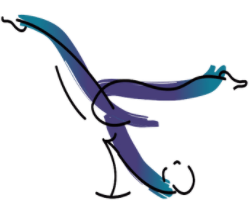Boosting Inclusivity in Your Pilates Class
When Joseph Pilates founded his groundbreaking method in 1926, he was keen to bring the “physical culture movement”—which advocated physical education through exercise, athletic excellence, and mental discipline—to people of all ages, cultural and economic backgrounds, and abilities. In fact, he first developed his system to aid in his own rehabilitation from polio. Pilates is highly suitable for rebuilding strength after an injury or illness, and Joseph first developed Pilates equipment to aid injured soldiers during WWII. If you are a Pilates teacher and you would like to ensure that clients with disabilities—or those in recovery—can benefit from your classes—then making small modifications can go a long way in helping you achieve your aim.
Start With the Physical Layout of Your Class
People with disabilities are more likely to miss out on opportunities to be more physically active compared to their non-disabled counterparts. One issue that can exacerbate this problem is physical barriers in the built environment. Outdoor areas require key accessibility features that they often lack. Take a look at the building your Pilates studio is located in and look for issues such as uneven terrain, grass, or gravel surfaces. Keep wheelchair users in mind. Is the ground flat and smooth, and are there minimum path and ramp widths at all points? What about the parking spaces? Are there widened access areas and extra-wide parking spaces? Paths should be clear, uncluttered, and well-lit. Stepped curbs must be avoided and ramps should be provided for wheelchair access. Investing in making necessary changes can go a long way toward boosting inclusion in your classes.
Considering Wall Pilates Classes
Senior clients and those with strength or mobility issues may benefit from dedicated Wall Pilates classes. This system essentially takes core strengthening and other exercises to a different level. If you’re wondering whether your clients can achieve optimal results with this method, know that you can make it happen by choosing suitably adapted exercises that work on targeted muscle groups (as would occur in a typical class). While traditional Pilates is based on floor- and machine-based exercises. Wall Pilates harnesses the greater stability afforded by a sturdy wall, while still keeping the experience dynamic and entertaining.
What Does a Wall Pilates Workout Involve?
A Wall Pilates workout needs to be well-structured and planned to suit the timing and size of your classes. In general, a typical Wall Pilates workout includes exercises such as wall squats, wall push-ups, wall leg lifts, wall core exercises, and more. On some days, you can work on specific targets, such as strength and mobility exercises. The latter can include arm curls, wall lunges, stretches, and rotations, all involving the use of the wall for support. On other days, you may wish to focus on flexibility. In this case, exercises such as wall chest openers, calf stretches, hip flexor stretches, or doorway pectoral stretches can help you hit your target. It is vital to check your clients’ posture and the alignment of their head, spine, and hips, in order for them to obtain the greatest benefits from this class and avoid injuries. The head should be well aligned with the spine, and the back should not be arched away from the wall. Some classes can be all about balance. Standing legwork and reverse Pilates legwork can help boost balance and stability.
Chair Pilates
Clients who need extra stability, as well as wheelchair users, can benefit from Pilates from the comfort of a chair. A full Chair Pilates workout can include neck and shoulder exercises, wrist rotations, arm raises, leg lifts, and exercises for the tummy and core—such as belly button pull-ins and pelvic floor lifting. Chair Pilates can help your clients work out all the major muscle groups, including the upper body, lower body, and stabilizing muscles. It is particularly suitable for clients with knee problems, as well as those wishing to hone their strength, balance, and stability, and its benefits include improved posture, flexibility, stability, and core strength.
Chair Pilates Is for Everyone
Chair Pilates is a magnificent stress buster for those with mobility limitations, chronic conditions, or injuries. Even those who perform traditional Pilates may embrace chair yoga as a way to improve their mat work by exploring new ways to connect with their body. If you are currently buying equipment for a new studio, then consider investing in a Pilates chair. The latter has a padded seat, pedals, resistance springs, and a sidebar and is a great tool for core strength and balance. A myriad of exercises for all body groups can be carried out on this piece of equipment.
If you’d love to open a truly inclusive and accessible studio, start with your layout. Make sure your studio is fully accessible, and perform any renovations required—including widening doorways and smoothening the outdoor landscape if necessary. Offer alternatives that lend greater support. Wall Pilates and Chair Pilates are two systems that are already booming in the Pilates sphere, so jump on the wave and take your practice to the next level of inclusivity.


